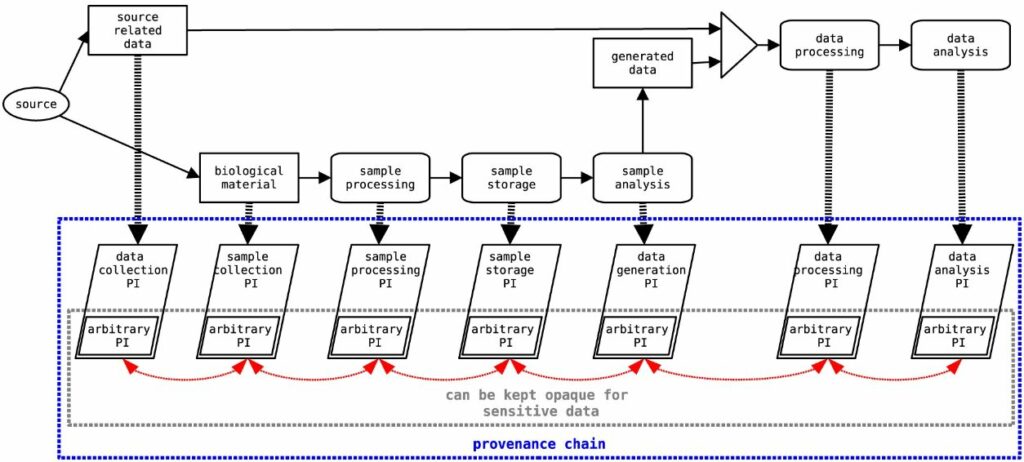Distributed provenance information is created when a documented research object or its derivatives is exchanged across multiple organisations (or organisational units), and each of the organisations can provide provenance information only about a part of the documented object’s life cycle. The exchanged object appears as an output of the sender’s process, and as an input of the receiver’s process. The corresponding provenance information is encapsulated in a provenance component(technically implemented as a PROV bundle). Linking these provenance components forms possibly distributed provenance chains. A provenance chain is depicted in Figure 2.

Figure 2: Scheme of a provenance chain. PI in the figure stands for “provenance information”. The figure is cited from [Wittner2022].
The CPM stipulates that the namespace used as part of a provenance structure identifier uniquely identifies the organisation that is responsible for provenance information generation.